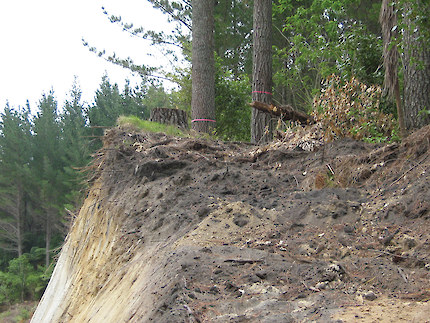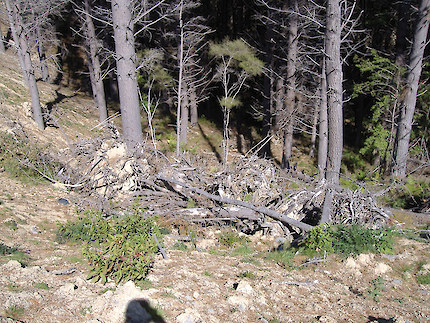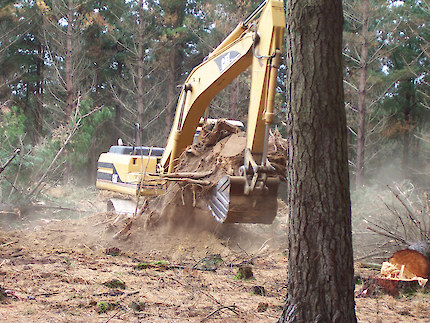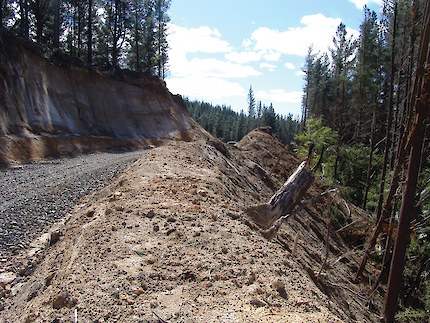Grass and scrub, topsoil, roots and branches must be removed because they rot or don’t compact. Otherwise, water can move through this material and may cause weak and unstable fills to collapse.

- The right number of trees have been removed to build the road

- More trees should have been removed
- Standing trees should not have been buried. They will cause road stability issues when they rot, and are less safe to log
- The most valuable part of the tree is buried!

- Topsoil and wet clay are being removed
- Good use of different machines

- Stumps have been left in an unsafe position for harvesting operations

- Remove vegetation, black soil, stumps and slash
- Place stumps on flat, stable ground, on a secure bench, or beyond the toe of fills
- Cart strippings to a safe disposal site if nowhere close by is suitable

- The topsoil was not properly stripped. Vegetation buried in the fill will rot and make it less stable
- The berms are too large, leading to overloaded batter slopes

- Topsoil and slash are in a safe and stable place that will not impact on harvesting
- Material is kept away from restricted areas. For example, waterways, native bush
- Debris is placed on a bench

- This stump should have been removed
- There is no water table drainage